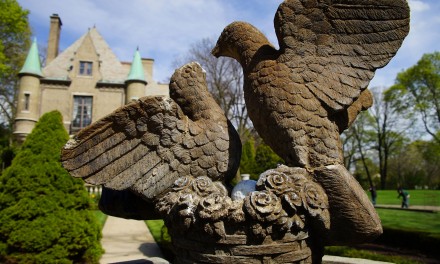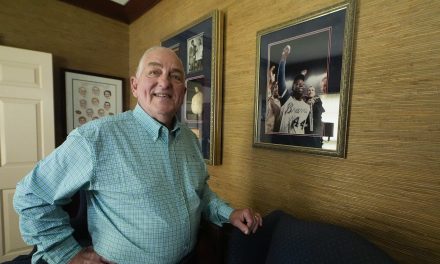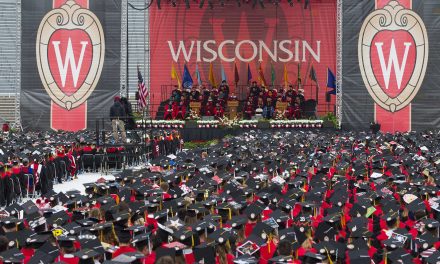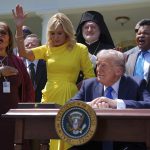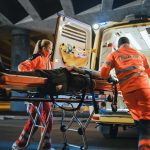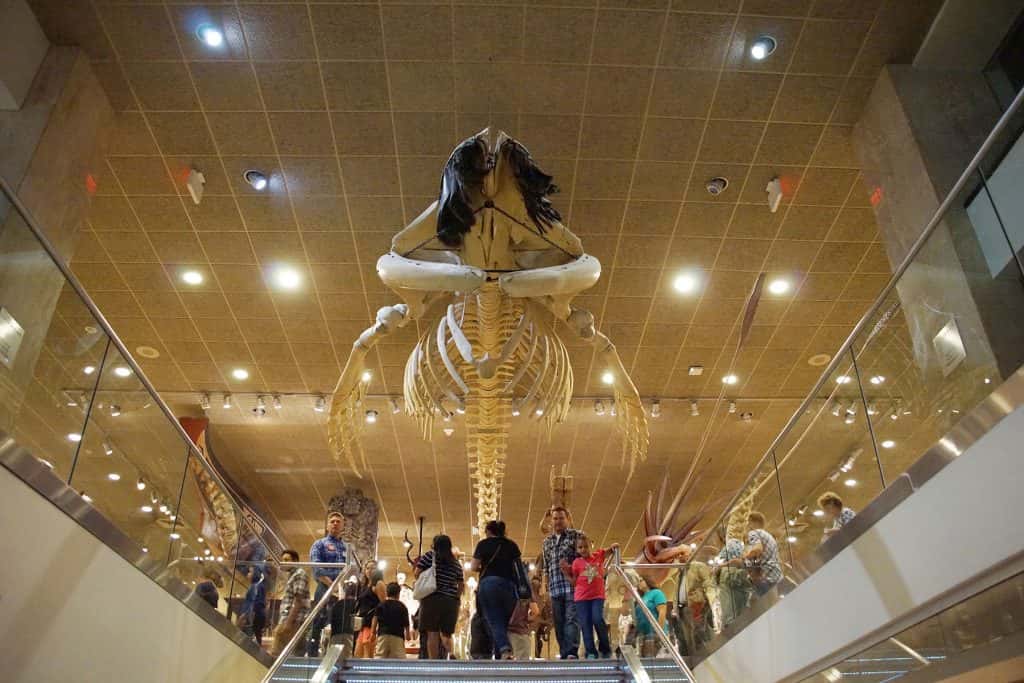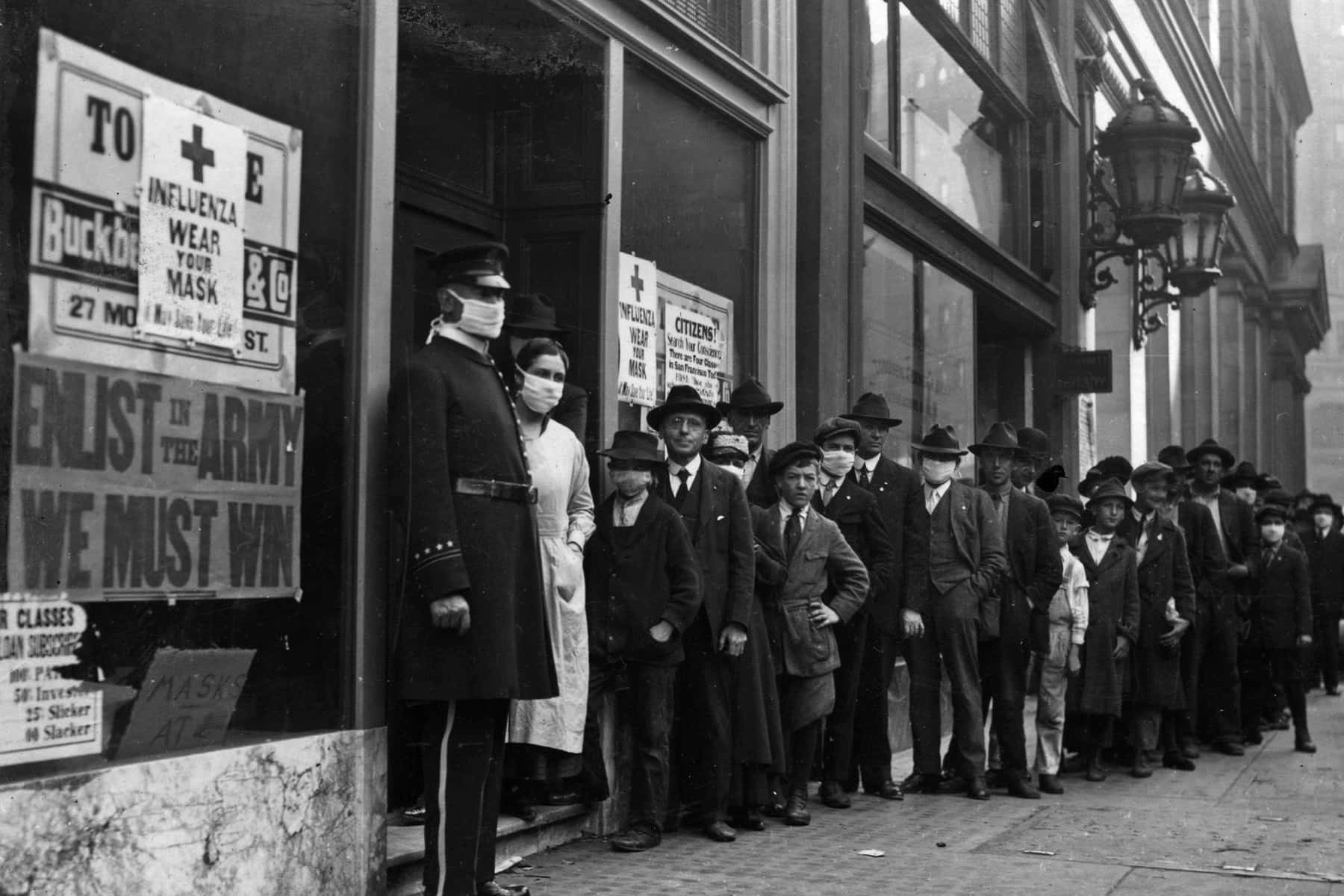
“Those who cannot remember the past are condemned to repeat it.” – George Santayana
“Those who don’t know history are doomed to repeat it.” – Edmund Burke
In the age of the novel coronavirus and the disease it causes, COVID-19, we can look to the past to learn some really valuable lessons. The Spanish flu, which began in Kansas, killed nearly 700,000 Americans. On of the hardest hit cities was San Francisco.
The first case of the influenza in the city was on September 23, 1918, when Edward Wagner was admitted to a hospital and eventually placed on quarantine at his home after contracting the virus on a trip to Chicago. San Francisco Health Officer Dr. William C. Hassler ordered Wagner quarantined in hopes to stop the virus spreading in the city. Two weeks later there were 169 cases in the city and a week later over 2,000 cases. An article by the university of Michigan Center for the History of Medicine documented what happened next.
“City residents were advised to avoid streetcars during peak rush hour times, asked to not dance in public places and to avoid crowds, and instructed to pay particular attention to their personal hygiene as well as that of their children. Dance halls were closed. Streetcar conductors were ordered to keep the windows of their cars open in all but rainy weather, hospitals were ordered to only accept patients who absolutely required their care, and hospital physicians and nurses were instructed to wear gauze masks when with flu patients.
Many of these measures taken back then sound similar to what is going on today. By mid-October the number of cases had grown to over 4,000. Dr. W. Fowler of San Jose reported seeing 525 patients in a single day. Much like today, “As the medical community frantically attempted to cure the flu or hold back its advance, numerous totally useless and possibly dangerous vaccines were foisted upon a desperate public” according to American Experience on PBS.
Dr. Hassler brought leaders together in a meeting to discuss a response to the growing crisis in mid-October. He suggested that a short closure order could possibly “limit most of all the cases to the home and give the other places a chance to thoroughly clean up and thus we may bring about a condition that will reduce the number of cases.” Many at the meeting felt it was a bad idea saying it would lead to an economic crisis. Several theater owners and dance hall operators on the other hand, thought it would help because they were already losing money because of the epidemic and believed the restrictions would slow the spread of the virus. On October 18th, the city acted.
“The Board of Health voted to close all places of public amusement, ban all lodge meetings, close all public and private schools, and to prohibit all dances and other social gatherings effective at 1:00 am on Friday, October 18. The Board did not close churches, but instead recommended that services and socials be either discontinued during the epidemic or held in the open air.”
After what we would call a “stay-at-home” order the Health Department went one step further. Dr. Hassler ordered the use of facemasks by all who came into close contact with the general public. Mayor James Rolph supported this initiative by declaring, “Wear a Mask and Save Your Life! A Mask is 99% Proof Against Influenza.” There was little proof that they were very effective because they were mostly homemade masks since the city had so few to distribute.
On October 21 health officials made a strong recommendation that all citizens should wear facemasks becoming the first city in the country to do so a day after 1,101 new cases and 32 more deaths. Wearing masks became in accepted practice and a symbol of wartime patriotism. The Red Cross issued a statement saying, “the man or woman or child who will not wear a mask now is a dangerous slacker” and the San Francisco Examiner stated, “The Flu Mask is No Longer a Joke.” On October 22nd 1,260 new cases were reported.
The mayor and local labor council supported the October 21 recommendation and called for complete compliance. Soon after, California governor William Stephens told state residents that it was the “patriotic duty for every American citizen” to wear a mask. However, just has we have seen throughout the country nowadays with people ignoring these recommendations and stay-at-home orders, many people did not comply.
The Board of Supervisors found that “through failure to realize the seriousness of the menacing disease, or possibly through captiousness or disregard of the public health,” many were ignoring the threat of the disease and measures designed to protect the public health. On October 25 they made wearing of masks mandatory for every resident and visitor to the city when in the public with two of more people. Police arrested violators. The San Francisco Examiner exclaimed on October 26 that “99 Percent of Residents Wear Masks.” On October 29 a Health Department Inspector was attacked while enforcing the order and shot his assailant and accidently wounded two others.
The front page of the San Francisco Examiner on November 7 proclaimed “’Flu” Epidemic Believed to be Checked.” As cases in the city declined, a recommendation to reopen the city was proposed. On November 16 the order to stay home was lifted and two days later residents all over the city gathered to celebrate the November 11 ending of WWI and the lifting of the ban that many hated. Whistles blared to let people know the ban was lifted and the San Francisco Chronicle reported, “the sidewalks and runnels were strewn with the relics of a torturous month.”
The San Francisco Examiner reported that, “Every Whistle in City Firehouses Will Sound Glad Tidings when Proclamation is Signed” on November 21. Headlines read, “Epidemic Definitely Stamped Out; Conditions Normal; Schools to Open Monday; Quarantine Off.” The day after the order was lifted The San Francisco Examiner reported that those still wearing masks were ridiculed for doing so. Public health officials were concerned that the order had been lifted too soon and warned that it would lead to more widespread infections. The Editorial page of the San Francisco Examiner on November 22nd prematurely proclaimed, “San Francisco Wins Victory In Its Battle With Influenza.”
As we examine the protests asking for stay-at-home orders to be lifted and multiple governors ending their orders in the next few weeks, what happened next in San Francisco serves as a cautionary tale. In 2007 a study by the National Academy of Sciences of the U.S.A. found that the measures the San Francisco took, including ordering facemasks to be worn, reduced the mortality rate by at least twenty-five percent.
Alex Navarro, the assistant director of the Center for the History of Medicine at the University of Michigan who researched this epidemic in 43 cities told NBC News, “When they removed those restrictions too soon, then many cities saw a resurgence in cases.” Navarro also told them, “research found that cities that used “early, sustained and layered” practices such as social distancing, closing public events and stay-at-home orders “fared better than those that did not.”
By October 19, San Francisco had 3,733 infected people and 70 deaths. When the order was lifted, cases began to grow again. Citizens had flocked to theaters, movie houses and dance halls after the order was lifted. On November 21 the mayor had annulled the ordinance requiring the use of facemasks. By December 7 Dr. Hassler warned the mayor that the epidemic was spreading rapidly again. By the end of December 5,000 new cases were reported in the city leading to over 23,000 total in and 2,729 deaths. The mayor once again asked residents to beginning wearing masks but did not shut down any businesses again.
On January 10 after 612 new cases and 37 deaths had been reported for the day, the Board of Supervisors voted to put the mask ordinance back in place effective January 17. On January 15, there were 510 reported cases and 50 people died. The following day another 538 cases were reported and 46 more people were killed by the influenza. As sentiment against the ordinance grew many prominent citizens, including some doctors formed the “Anti-Mask League” to fight the ordinance and 4,500 people attended a public meeting after hearing the order would be reinstated.
On February 1 the order was rescinded. The United States Public Health Service reported in 1919 that San Francisco “suffered the most of all major American cities.” By the end of February 1919, 3,213 had died, nearly doubling from 1,857 in November.
On March 17, 2020 San Francisco Mayor London Breed along with her peers in the Bay Area implemented the nation’s first stay-at-home order by taking stock in what was learned by the city’s past. On April 17 she ordered that, “Starting today, people in San Francisco are required to wear face coverings at essential businesses, in public facilities, on transit, and while performing essential work. This is not a replacement for staying home and physical distancing, but it is an important step for safety.”
If we can learn anything from this experience in San Francisco it is clear that things have not changed all that much. Just as what happened then, business owners are clamoring for their businesses to reopen. Citizens are protesting against the orders of state officials and openly defying these mandates. We hear shouts of “unconstitutionality” today just as we heard then. Twenty-seven states are set to ease restrictions by May 8th. Only time will tell if we see a resurgence of the coronavirus once the orders are lifted. The evidence from back then tells us that it is certainly a possibility.
A clear contemporary lesson can be learned from what occurred when officials in Hokkaido, Japan lifted their restrictions too soon due to economic concerns. They were the epicenter of the first outbreak in Japan and instituted a lockdown very quickly. The lockdown lasted three weeks and was lifted.
A second wave of infections followed very quickly and less than a month later they had to go back into lockdown. “Now I regret it, we should not have lifted the first state of emergency,” Dr. Kiyoshi Nagase, chairman of the Hokkaido Medical Association, told TIME Magazine.
“Hokkaido shows, for example, that what’s happening in the U.S. with individual governors opening up is very dangerous…That’s what we now know: Even if you control the first wave, you can’t relax” says Kazuto Suzuki, Vice Dean of International Politics at Hokkaido University.
“What good has impatience ever brought? It has only served as the mother of mistakes and the father of irritation.” – Steve Maroboli
“Impatience kills quickly.” – Katerina Stoykova Klemer
© Photo
Library of Congress

